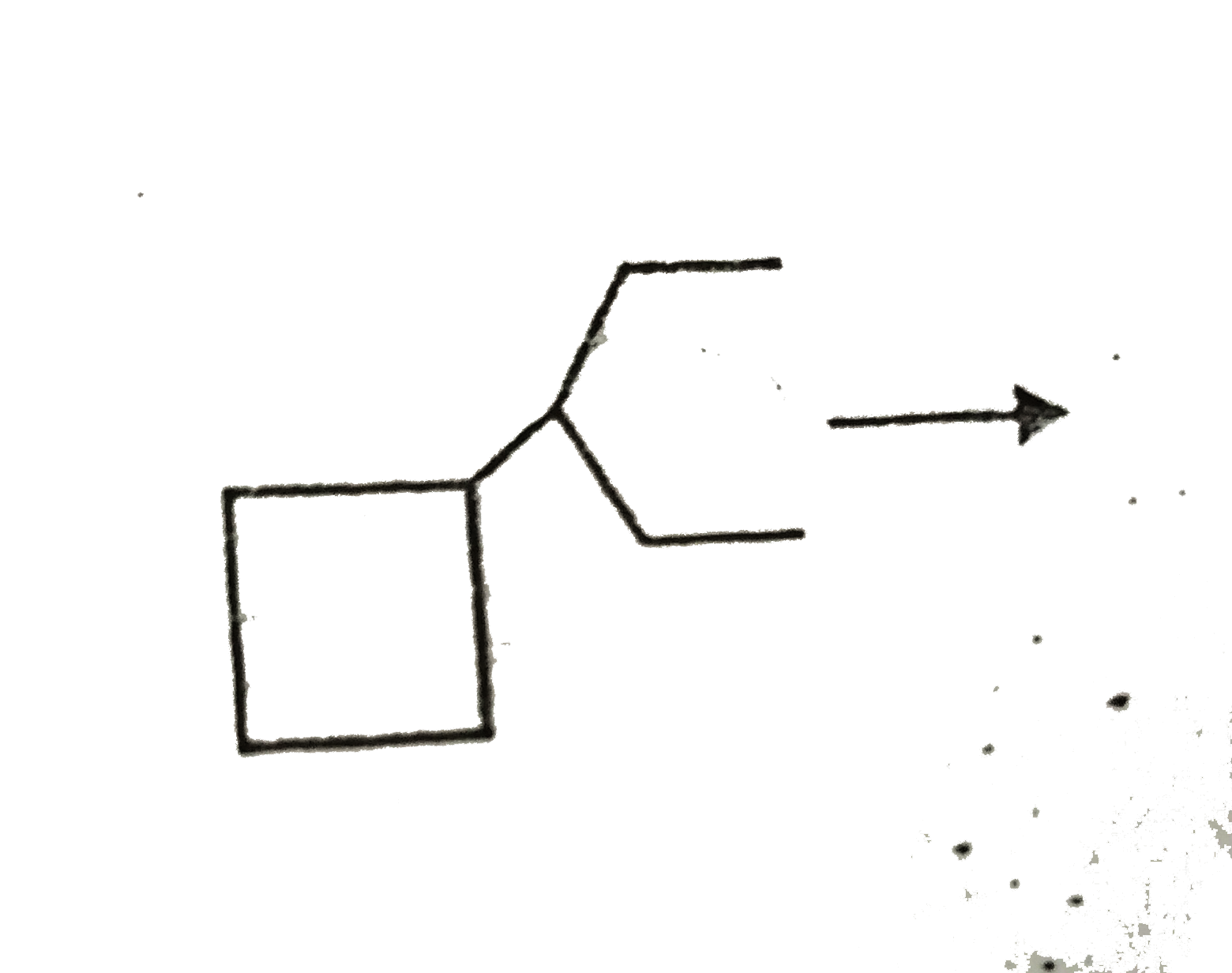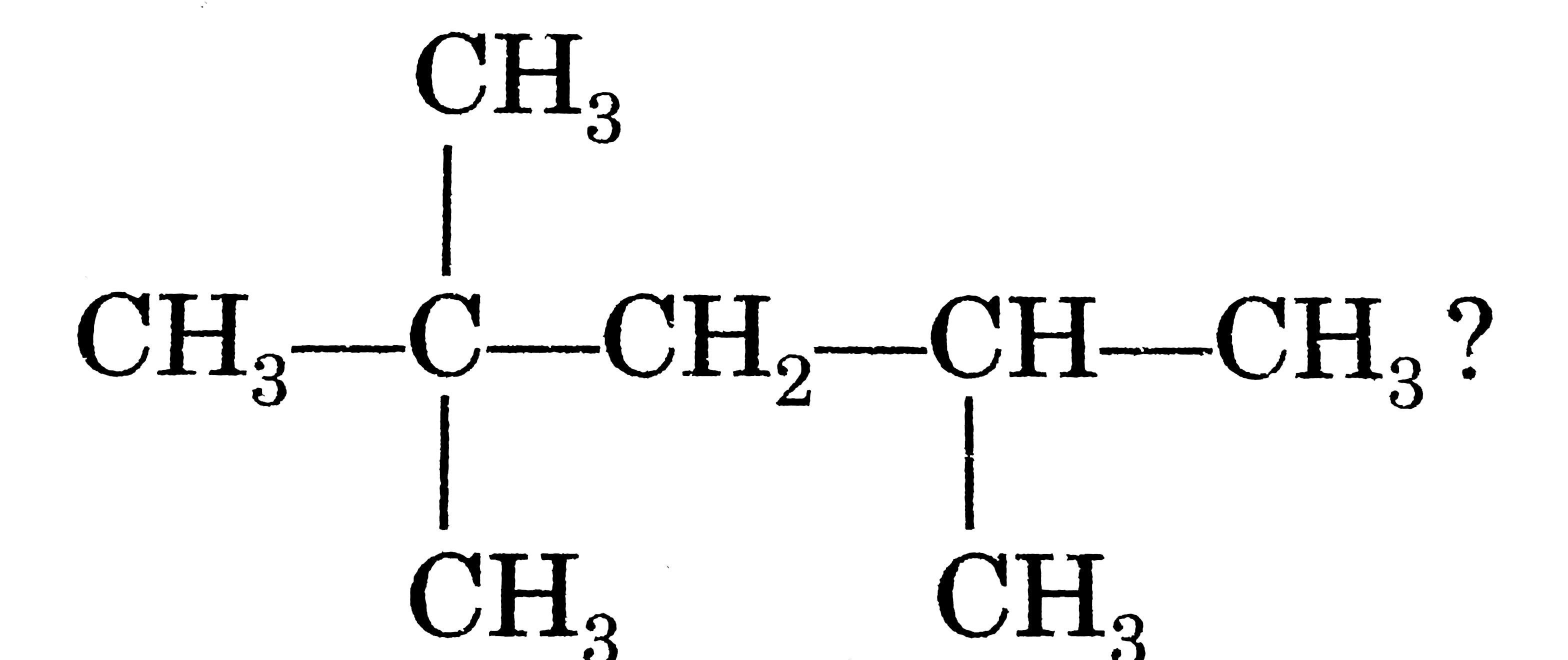How many monobromo derivatives are obtained when 2-methylbutane is subjected to photobromination ?
To determine how many monobromo derivatives are obtained when 2-methylbutane is subjected to photobromination, we can follow these steps:
Step 1: Understand the Structure of 2-Methylbutane
2-Methylbutane has the following structure:
CH3|CH3−CH−CH2−CH3|CH3
This molecule has a total of 5 carbon atoms and several hydrogen atoms attached to them.
Step 2: Identify the Hydrogen Atoms
Next, we need to identify the hydrogen atoms that can be replaced by bromine during the photobromination process. In 2-methylbutane, there are different types of hydrogen atoms based on their position:
- Primary (attached to terminal carbons)
- Secondary (attached to the second carbon)
- Tertiary (attached to the third carbon)
Step 3: Count the Unique Hydrogen Atoms
- The terminal carbons (C1 and C5) have 3 primary hydrogens each.
- The second carbon (C2) has 1 secondary hydrogen.
- The third carbon (C3) has 1 tertiary hydrogen.
Step 4: Determine the Possible Monobromo Derivatives
When we replace each unique hydrogen atom with a bromine atom, we will get different derivatives:
1. Replacing a primary hydrogen (C1 or C5): This will yield the same product since they are equivalent.
2. Replacing the secondary hydrogen (C2): This will yield a unique product.
3. Replacing the tertiary hydrogen (C3): This will yield another unique product.
Step 5: Consider Stereoisomers
For the products derived from the secondary and tertiary hydrogen replacements, we need to consider stereoisomers:
- The secondary hydrogen replacement at C2 will yield two stereoisomers (R and S configurations).
- The tertiary hydrogen replacement at C3 will also yield two stereoisomers.
Step 6: Count All Unique Monobromo Derivatives
Now, we can summarize the total unique monobromo derivatives:
1. From C1 (primary) - 1 product (same for C5)
2. From C2 (secondary) - 2 products (R and S)
3. From C3 (tertiary) - 2 products (R and S)
Adding these gives us:
- 1 (from C1) + 2 (from C2) + 2 (from C3) = 5 unique monobromo derivatives.
Final Answer
Therefore, the total number of monobromo derivatives obtained from the photobromination of 2-methylbutane is 5.
---
2-Methylbutane has the following structure:
CH3|CH3−CH−CH2−CH3|CH3
This molecule has a total of 5 carbon atoms and several hydrogen atoms attached to them.
Next, we need to identify the hydrogen atoms that can be replaced by bromine during the photobromination process. In 2-methylbutane, there are different types of hydrogen atoms based on their position:
- Primary (attached to terminal carbons)
- Secondary (attached to the second carbon)
- Tertiary (attached to the third carbon)
- The terminal carbons (C1 and C5) have 3 primary hydrogens each.
- The second carbon (C2) has 1 secondary hydrogen.
- The third carbon (C3) has 1 tertiary hydrogen.
When we replace each unique hydrogen atom with a bromine atom, we will get different derivatives:
1. Replacing a primary hydrogen (C1 or C5): This will yield the same product since they are equivalent.
2. Replacing the secondary hydrogen (C2): This will yield a unique product.
3. Replacing the tertiary hydrogen (C3): This will yield another unique product.
For the products derived from the secondary and tertiary hydrogen replacements, we need to consider stereoisomers:
- The secondary hydrogen replacement at C2 will yield two stereoisomers (R and S configurations).
- The tertiary hydrogen replacement at C3 will also yield two stereoisomers.
Now, we can summarize the total unique monobromo derivatives:
1. From C1 (primary) - 1 product (same for C5)
2. From C2 (secondary) - 2 products (R and S)
3. From C3 (tertiary) - 2 products (R and S)
- 1 (from C1) + 2 (from C2) + 2 (from C3) = 5 unique monobromo derivatives.
Therefore, the total number of monobromo derivatives obtained from the photobromination of 2-methylbutane is 5.
Topper's Solved these Questions
- BOOK - PRADEEPCHAPTER - HYDROCARBONSEXERCISE - ADDITIONAL QUESTIONS (SHORT ANSWER QUESTIONS)62videos
HYDROCARBONS
- BOOK - PRADEEPCHAPTER - HYDROCARBONSEXERCISE - ADDITIONAL QUESTIONS (LONG ANSWER QUESTIONS)11videos
HYDROCARBONS
- BOOK - PRADEEPCHAPTER - HYDROCARBONSEXERCISE - NCERT EXEMPLAR PROBLEMS WITH ANSWERS, HINTS AND SOLUTIONS (LONG ANSWER QUESTIONS )4videos
HYDROCARBONS
- BOOK - PRADEEPCHAPTER - EQUILIBRIUM IN PHYSICAL AND CHEMICAL PROCESSESEXERCISE - Competition Focus (Jee(Main and advanced)/Medical Entrance) VIII. ASSERTION - REASON TYPE QUESTIONS (TYPE - II)10videos
EQUILIBRIUM IN PHYSICAL AND CHEMICAL PROCESSES
- BOOK - PRADEEPCHAPTER - HYDROGEN EXERCISE - COMPETITION FOCUS (Assertion-Reason Type Questions) Type 215videos
HYDROGEN
Similar Questions
Knowledge Check
- Question 1 - Select One
How many haloalkanes are obtained when ethane is subjected to chlorination?
ASixBNineCEightDSeven - Question 2 - Select One
How many products will be obtained when propane is subjected to vapour phase nitration?
A2B3C4D5 - Question 3 - Select One
How many hydrocarbons are formed when ethyl bromide is subjected to the Wurtz reaction?
AJust oneBTwoCThreeDFour
How many monochloro derivatives are possible when 3-methylheptane is subjected to free radical chlorination ?
View SolutionHow many monochloro derivatives are possible when 3-methylheptane is subjected to free radical chlorination ?
View SolutionHow many monochloro derivatives are possible when 3-methylheptane is subjected to free radical chlorination ?
View SolutionHow many monochloro derivatives are possible for pentane?
View SolutionHow many mono chloro derivatives are possible , when the given compound is subjected to monochlorination?
 View Solution
View Solution


